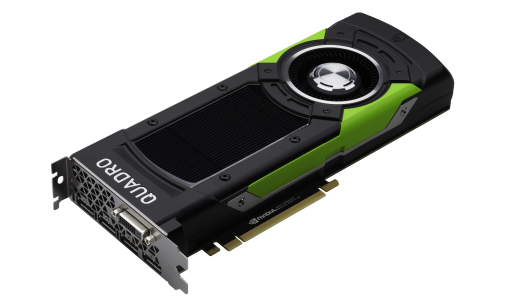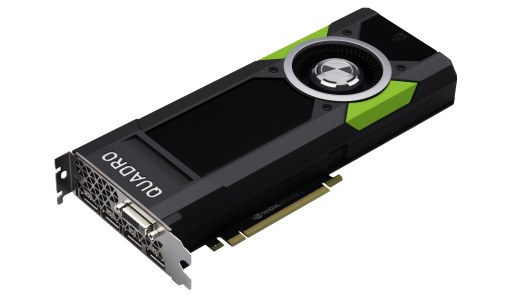Nvidia Brings Pascal To Pro Graphics With Quadro P6000, P5000 GPUs
At SIGGRAPH 2016, Nvidia announced its first two professional graphics cards for workstations based on the Pascal architecture, the Quadro P6000 and the Quadro P5000.
With this release, Nvidia brings the well-documented Pascal design to workstation graphics. The 16nm FinFET transistors mean even more processing power in a smaller space. Simultaneous Multi Projection (SMP) is actually more important in the workstation space because applications can now use the same geometry in multiple windows, and it is common in 3D applications to have an entire orthographic projection of the same geometry on screen (top, front, side and perspective views).
Lighting and shading artists will appreciate the performance boost given by dynamic load balancing because the card will perform better when using real-time shaded and CUDA- or OpenCL-rendered views at the same time.
The DisplayPort 1.4 ports support up to 7680x4320 at 60 Hz in 30-bit color or can drive up to four 5k displays simultaneously. The Quadro Sync 2 card can be used to sync up to 8 GPUs per system for artifact-free multi-display imagery.
Both cards are expected to be available in October 2016. Pricing was not available at press time.
| Header Cell - Column 0 | Quadro P6000 | Quadro P6000 |
|---|---|---|
| CUDA Cores | 3840 | 3840 |
| GPU Memory | 24 GB GDDR5X | 16 GB GDDR5X |
| FP32 Performance | 12 TFLOPs | 8.9 TFLOPS |
| Max Power Consumption | 250W | 180W |
| Graphics Bus | PCI Express 3.0 x16 | PCI Express 3.0 x16 |
| Display Connectors | -DP 1.4 (4)-DVI-D (1)-Optional Stereo | -DP 1.4 (4)-DVI-D (1)-Optional Stereo |
| Form Factor | 4.4" H x 10.5" L Dual Slot | 4.4" H x 10.5" L Dual Slot |
Get Tom's Hardware's best news and in-depth reviews, straight to your inbox.
-
nix27 Reply
And Nvidia laughs at the $10K price tag for Pro SSG.18336375 said:AMD laughs at your paltry 24GB of memory, LOL
-
salgado18 Just read the Radeon Pro SSG news, and suddenly this looks so boring... :/Reply
The new Radeon Pro WX professional series do to, ok? Not trolling Nvidia. -
tiagoluz8 Reply18336375 said:AMD laughs at your paltry 24GB of memory, LOL
NVIDIA laughs at AMD's paltry 2GB/s (max) 1TB SSD inside the GPU. -
bit_user So, 2x the memory of a new Titan X or GTX 1080 for at least 5x the $? That and ECC are probably the only differences.Reply
*yawn*
BTW, they're seriously over-hyping "Simultaneous Multi Projection". It doesn't enable anything you couldn't do before. It just an optimization for doing it in a single pass. I doubt most apps are bottlenecked by geometry processing, anyhow.

